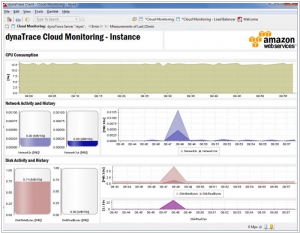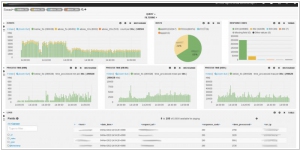Amazon CloudWatch vs Logstash
June 03, 2023 | Author: Michael Stromann
Amazon CloudWatch and Logstash are both popular tools used for monitoring and managing logs, but they have distinct differences:
1. Purpose and Functionality: Amazon CloudWatch is a comprehensive monitoring and observability service provided by Amazon Web Services (AWS). It collects and analyzes metrics, logs, and events from various AWS resources and applications. CloudWatch primarily focuses on monitoring infrastructure and cloud-native services within the AWS ecosystem. Logstash, on the other hand, is an open-source data processing tool in the Elastic Stack. It specializes in collecting, parsing, and transforming logs from diverse sources, including applications, servers, and systems.
2. Log Collection and Aggregation: Amazon CloudWatch provides native log collection capabilities for AWS resources, enabling centralized log aggregation and management within the AWS environment. It supports ingesting logs from services like AWS EC2, AWS Lambda, and AWS CloudTrail. Logstash, on the other hand, is a versatile log shipper and processor that can collect logs from a wide range of sources, including both cloud-based and on-premises systems. It supports various log formats and offers powerful parsing and filtering capabilities.
3. Data Transformation and Enrichment: Logstash offers powerful data transformation capabilities, allowing users to parse, filter, and enrich log data before sending it to the desired output destination. It provides a rich set of plugins that enable advanced log processing, including field extractions, data masking, and enrichment with additional metadata. Amazon CloudWatch, on the other hand, has more limited data transformation features and focuses primarily on collecting and analyzing logs and metrics within the AWS ecosystem.
4. Integration with Ecosystem: Logstash is part of the Elastic Stack, which includes other tools like Elasticsearch and Kibana. It seamlessly integrates with these tools to provide a complete log management and analytics solution. Amazon CloudWatch integrates tightly with other AWS services and is well-suited for monitoring and managing logs within the AWS ecosystem. It can also integrate with other tools and services using its APIs.
5. Deployment and Scalability: Logstash can be deployed in various environments, including on-premises, cloud, and hybrid setups. It offers flexibility in scaling and configuring the deployment based on specific requirements. Amazon CloudWatch, being a managed service provided by AWS, is automatically scalable and highly available within the AWS infrastructure. It offers ease of setup and management without the need for provisioning and scaling the underlying infrastructure.
See also: Top 10 IT Monitoring software
1. Purpose and Functionality: Amazon CloudWatch is a comprehensive monitoring and observability service provided by Amazon Web Services (AWS). It collects and analyzes metrics, logs, and events from various AWS resources and applications. CloudWatch primarily focuses on monitoring infrastructure and cloud-native services within the AWS ecosystem. Logstash, on the other hand, is an open-source data processing tool in the Elastic Stack. It specializes in collecting, parsing, and transforming logs from diverse sources, including applications, servers, and systems.
2. Log Collection and Aggregation: Amazon CloudWatch provides native log collection capabilities for AWS resources, enabling centralized log aggregation and management within the AWS environment. It supports ingesting logs from services like AWS EC2, AWS Lambda, and AWS CloudTrail. Logstash, on the other hand, is a versatile log shipper and processor that can collect logs from a wide range of sources, including both cloud-based and on-premises systems. It supports various log formats and offers powerful parsing and filtering capabilities.
3. Data Transformation and Enrichment: Logstash offers powerful data transformation capabilities, allowing users to parse, filter, and enrich log data before sending it to the desired output destination. It provides a rich set of plugins that enable advanced log processing, including field extractions, data masking, and enrichment with additional metadata. Amazon CloudWatch, on the other hand, has more limited data transformation features and focuses primarily on collecting and analyzing logs and metrics within the AWS ecosystem.
4. Integration with Ecosystem: Logstash is part of the Elastic Stack, which includes other tools like Elasticsearch and Kibana. It seamlessly integrates with these tools to provide a complete log management and analytics solution. Amazon CloudWatch integrates tightly with other AWS services and is well-suited for monitoring and managing logs within the AWS ecosystem. It can also integrate with other tools and services using its APIs.
5. Deployment and Scalability: Logstash can be deployed in various environments, including on-premises, cloud, and hybrid setups. It offers flexibility in scaling and configuring the deployment based on specific requirements. Amazon CloudWatch, being a managed service provided by AWS, is automatically scalable and highly available within the AWS infrastructure. It offers ease of setup and management without the need for provisioning and scaling the underlying infrastructure.
See also: Top 10 IT Monitoring software




